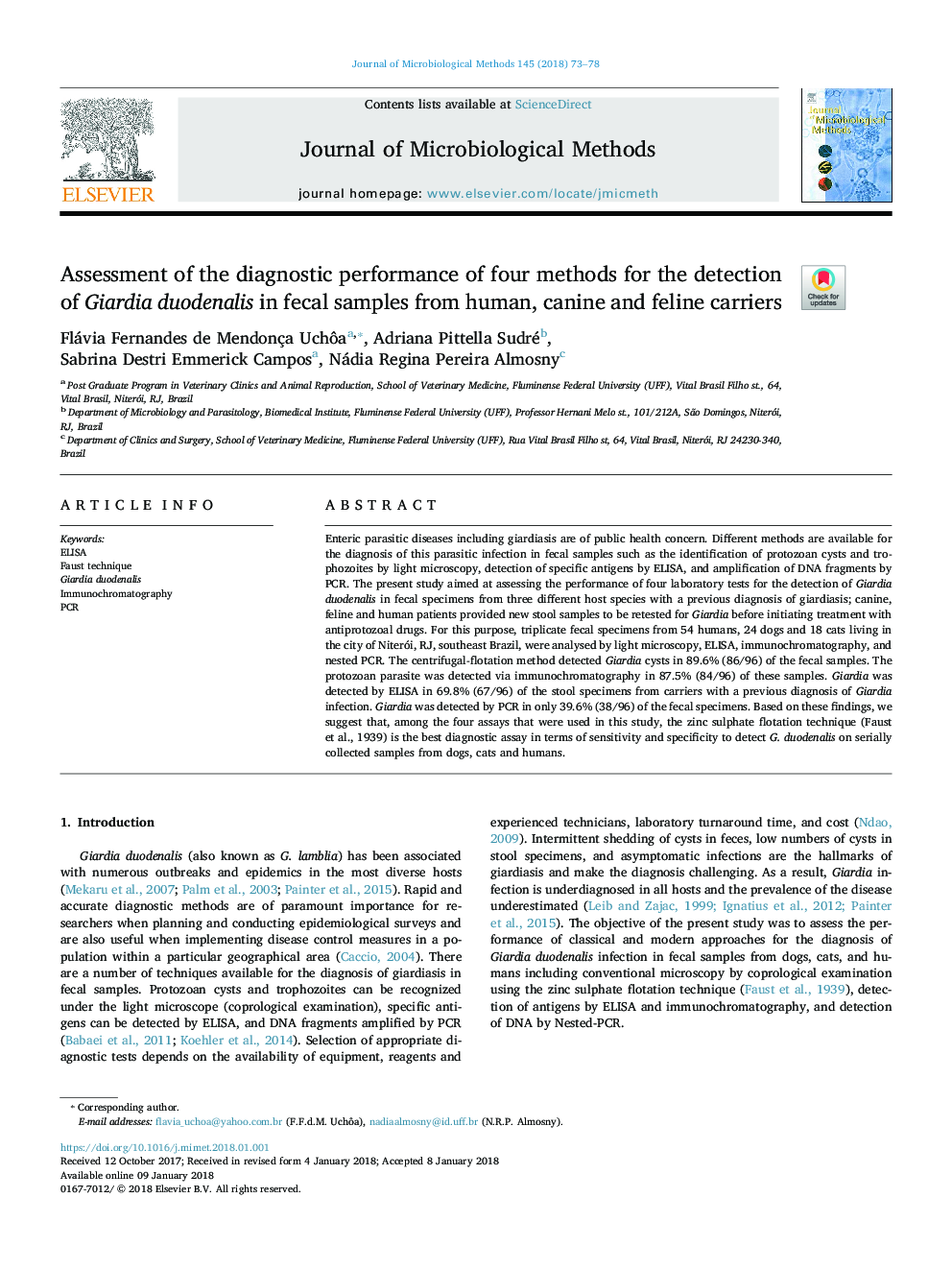| Article ID | Journal | Published Year | Pages | File Type |
|---|---|---|---|---|
| 8420559 | Journal of Microbiological Methods | 2018 | 6 Pages |
Abstract
Enteric parasitic diseases including giardiasis are of public health concern. Different methods are available for the diagnosis of this parasitic infection in fecal samples such as the identification of protozoan cysts and trophozoites by light microscopy, detection of specific antigens by ELISA, and amplification of DNA fragments by PCR. The present study aimed at assessing the performance of four laboratory tests for the detection of Giardia duodenalis in fecal specimens from three different host species with a previous diagnosis of giardiasis; canine, feline and human patients provided new stool samples to be retested for Giardia before initiating treatment with antiprotozoal drugs. For this purpose, triplicate fecal specimens from 54 humans, 24 dogs and 18 cats living in the city of Niterói, RJ, southeast Brazil, were analysed by light microscopy, ELISA, immunochromatography, and nested PCR. The centrifugal-flotation method detected Giardia cysts in 89.6% (86/96) of the fecal samples. The protozoan parasite was detected via immunochromatography in 87.5% (84/96) of these samples. Giardia was detected by ELISA in 69.8% (67/96) of the stool specimens from carriers with a previous diagnosis of Giardia infection. Giardia was detected by PCR in only 39.6% (38/96) of the fecal specimens. Based on these findings, we suggest that, among the four assays that were used in this study, the zinc sulphate flotation technique (Faust et al., 1939) is the best diagnostic assay in terms of sensitivity and specificity to detect G. duodenalis on serially collected samples from dogs, cats and humans.
Related Topics
Life Sciences
Biochemistry, Genetics and Molecular Biology
Biotechnology
Authors
Flávia Fernandes de Mendonça Uchôa, Adriana Pittella Sudré, Sabrina Destri Emmerick Campos, Nádia Regina Pereira Almosny,
